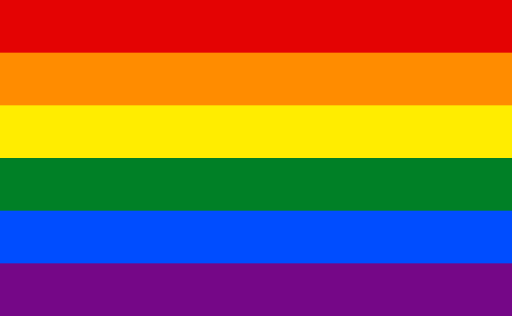Media Matters: Queer representation by the numbers

Wikimedia Commons
March 8, 2018
Moonlight surpassed seemingly insurmountable bounds with it’s heartbreakingly honest narrative, becoming the first LGBT film to win the Best Picture Award. However, even after its memorable win at last year’s Oscars, there doesn’t seem to be a noticeable change in the way that Hollywood treats LGBTQ+ subject matter, at least in films produced by major studios.
Out of the 126 films produced in 2017 by major film studios (meaning Disney, Universal, Warner Brothers, Sony, Paramount, Lionsgate, and 20th Century Fox), 23 included LGBT characters. That’s about 18 percent of movies, which means that 82 percent of movies are telling queer people that they don’t exist.
Another question comes to mind: what is the quality of the representation that LGBTQ+ people receive? Similar to the Bechdel Test, the Vito Russo test measures the quality of queer characters that appear on screen. It asks whether the characters are visibly LGBT, whether they are defined solely by their queer identity, and whether their character adds anything to the story. In other words, proving the character isn’t just the butt of a joke and has more than a minute of screen time.
Out of the 23 LGBTQ+ inclusive films this year, a grand total of 9 films pass the Vito Russo test. 7 percent of movies agree that queer people hold a place in our society outside of comic relief. Believe it or not, this is a slight increase from last year.
Even if you’re complaining that LGBT people are minorities, and that that somehow means that they shouldn’t be represented, to tell them that they are only worth 7 percent of a good story, and not only that, not worth the proportional screen time that their straight counterparts get, is straight denial of the existence of queer people.
How will society learn to accept queer people if they don’t know that they exist, if they haven’t realized that queer people are just, well, people?
Even when represented accurately, most films that sympathize with the queer experience highlight the stigma and pain of being queer in an unaccepting society, instead of celebrating it. While this is a good way to get audiences to empathize with the struggles LGBT figures have had to face, queer characters rarely, if ever, get happy endings.
Since 1976 there have been 18,000 straight characters on TV. Out of the 383 lesbian or bisexual characters that have appeared on TV, 162 are dead. Even in the past two television seasons, 62 lesbian and bisexual characters have been killed off. There’s a reason for the ‘Bury Your Gays’ trope. Queer people are consistently killed off in every medium they appear in.
Where are the movies that tell kids that it’s okay to be LGBTQ+, to be themselves? Where are the movies that tell queer kids that they can fall in love or aspire to great things just like the rest of their peers?
2016’s Moonlight changed the game on major LGBTQ+ representation. 2017’s Call Me By Your Name redefined the queer coming-of-age movie. As of 2018, Love, Simon, 20th Century Fox’s upcoming gay coming-of-age movie, is the first of its kind, both in terms of its feature of a gay main character and its frank depiction of coming out in the 21st century.
Movies are vehicles to move and change society. They inspire those who take the time to listen closely to its lessons to live their best lives. Films aren’t just the stories of the people and the places that exist within its run time; films are stories about humanity, and to not show the whole of humanity is to deny the experiences of millions of people.


















![“[Building nerf blasters] became this outlet of creativity for me that hasn't been matched by anything else. The process [of] making a build complete to your desire is such a painstakingly difficult process, but I've had to learn from [the skills needed from] soldering to proper painting. There's so many different options for everything, if you think about it, it exists. The best part is [that] if it doesn't exist, you can build it yourself," Ishaan Parate said.](https://harkeraquila.com/wp-content/uploads/2022/08/DSC_8149-900x604.jpg)




![“When I came into high school, I was ready to be a follower. But DECA was a game changer for me. It helped me overcome my fear of public speaking, and it's played such a major role in who I've become today. To be able to successfully lead a chapter of 150 students, an officer team and be one of the upperclassmen I once really admired is something I'm [really] proud of,” Anvitha Tummala ('21) said.](https://harkeraquila.com/wp-content/uploads/2021/07/Screen-Shot-2021-07-25-at-9.50.05-AM-900x594.png)







![“I think getting up in the morning and having a sense of purpose [is exciting]. I think without a certain amount of drive, life is kind of obsolete and mundane, and I think having that every single day is what makes each day unique and kind of makes life exciting,” Neymika Jain (12) said.](https://harkeraquila.com/wp-content/uploads/2017/06/Screen-Shot-2017-06-03-at-4.54.16-PM.png)








![“My slogan is ‘slow feet, don’t eat, and I’m hungry.’ You need to run fast to get where you are–you aren't going to get those championships if you aren't fast,” Angel Cervantes (12) said. “I want to do well in school on my tests and in track and win championships for my team. I live by that, [and] I can do that anywhere: in the classroom or on the field.”](https://harkeraquila.com/wp-content/uploads/2018/06/DSC5146-900x601.jpg)
![“[Volleyball has] taught me how to fall correctly, and another thing it taught is that you don’t have to be the best at something to be good at it. If you just hit the ball in a smart way, then it still scores points and you’re good at it. You could be a background player and still make a much bigger impact on the team than you would think,” Anya Gert (’20) said.](https://harkeraquila.com/wp-content/uploads/2020/06/AnnaGert_JinTuan_HoHPhotoEdited-600x900.jpeg)

![“I'm not nearly there yet, but [my confidence has] definitely been getting better since I was pretty shy and timid coming into Harker my freshman year. I know that there's a lot of people that are really confident in what they do, and I really admire them. Everyone's so driven and that has really pushed me to kind of try to find my own place in high school and be more confident,” Alyssa Huang (’20) said.](https://harkeraquila.com/wp-content/uploads/2020/06/AlyssaHuang_EmilyChen_HoHPhoto-900x749.jpeg)










